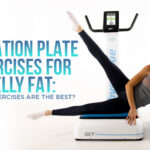What Are Posture Headaches and 5 Simple Ways to Relieve Them
Humanity has come a long way from the hunter-gatherer days. Today, we’re all about technology and getting things done more efficiently and faster than ever before. But this means long hours spent in front of a computer or a smartphone screen, resulting in adverse physical symptoms.
However, it’s not just in our work lives where our physical well-being is affected. It can also start manifesting itself in our free time when we engage with things like video game monitors, televisions, and other devices.
One very often neglected aspect of our bodies as they navigate our modern lives is our posture. You may never have thought about this interesting fact: for every inch that your neck bends forward over the neutral position, an extra 10 pounds of weight is created on your neck.
This can have serious consequences. To find out what they are and how to address them, keep reading below.
What are the symptoms of poor posture?
Poor posture is manifested in multiple ways that are quite easy to pinpoint. For example, the curve of your back can start forming into a C-shape, your shoulders may look rounded at the front, your head may jut out and your neck can start inching forward.
As a result of this, there are numerous symptoms of poor posture. These can include:
- Tension in your body
- Feelings of tightness
- Dullness and pressure in your forehead
- Neck and head stiffness
- Constrained neck and head movements
- Pain from misalignment
- Shallow breathing
- Decreased energy levels
- Lightheadedness
- Difficulties in concentrating
- Posture headaches
Of all of these symptoms, posture headaches are perhaps the most serious and debilitating. Also known as cervical headaches or cervicogenic headaches, they’re generally connected to the different variations of poor posture, described above.
Also important to note regarding these headaches in particular is how the pain is distributed. Imagine that you fall and hurt your knee. In most cases, the pain you’ll feel is at the exact point of contact. This means if your hurt your knee, the knee itself will be sore. But with these types of headaches, the situation is a bit different. Why? Because of two phenomena that are closely related. These are trigger points and pain referrals.
When it comes to triggering points related to these headaches, the pain is experienced farther away from the direct cause. As such, the trigger may be muscle knots in the back or neck which can become stiff or painful. However, the pain referral happens when the pain caused by these muscle knots is transferred to the head causing headaches as a result of poor posture.
Further to this, there’s another cause of headaches related to poor posture. This time, it’s related to irritation of the nerves in the actual spine, right below the skull. These headaches are generally caused when there is bone stiffness in the neck or a muscle spasm. As such, the pain travels up to the head, resulting in these headaches.
Therefore, there’s a clear relationship between such headaches and poor posture. In particular, where “rounded shoulders” occur, this type of poor posture stance generally results in strain and pain due to stress in the trapezoids, upper back and neck muscles leading to pain felt in the head.
Can bad posture give you migraines?
Migraines come in a variety of forms. There are those without aura, with aura, and silent migraines.
People who get migraines with an aura generally experience blind spots in their vision, see flashing lights/zigzags, experience impairments in speech, have dizzy spells, and can also feel tingling and numbness.
Although the results from research are mixed in terms of whether bad posture can give you migraines, it is believed that there is a relationship between the two.
And, therefore, it’s not only the milder posture headaches that people experience but stronger and more severe migraines, too.
Can fixing posture cause headaches?
Now that you know that there’s a strong correlation and relationship between poor posture and posture headaches, you may wonder whether fixing your posture can cause headaches. Well, research shows that by making efforts to improve your posture, instead of causing more headaches, these headaches are much more likely to decline.
But other health benefits you might experience from improving your posture include feeling more energetic, burning more calories, and giving your joints a rest and your stress levels could also decline.
Overall, there are multiple benefits to improving your posture and these do not include just reducing or eliminating the number of headaches you get.
How do you get rid of posture headaches?
Getting rid of posture headaches is not as tough as it may seem. You do not necessarily need to visit a chiropractor or a physiotherapist, although you are free to pursue these options as well. Some of the steps you can follow in the comfort of your own home and while you go about living your daily life include:
- Step one is to create an attention loop. What does this mean? It generally means that you shift your attention from whatever task you’re busy with at the moment, every 20-30 minutes, and you concentrate on your posture.If you notice that your shoulders are slumped forward creating a C-shape in your back and your neck and head are forward, you can make easy adjustments to your posture by making a conscious effort to check in with yourself regularly.
This can create a healthy habit for you further down the road and you’ll be on your way to improving your posture over the long term whilst reducing the associated symptoms that go along with poor posture.
- Another easy-to-do exercise is to monitor your body and do chin tucks and scapular retraction exercises. When it comes to your chin, pay attention to whether it’s jutted out forward.If it is, gently tucks it into about a 45-degree angle to your body. Regarding scapular retraction exercises (which refer to the shoulder blade), consider moving this forward and backward and even rotating it throughout the day to help ease tension and prevent headaches.
- For those who sit in front of a desk and screen for long periods, making gentle adjustments to your posture is another great way to improve your posture.One of the easiest rules to follow is to ensure that your ears are over your shoulders, which are over your hips. This ensures that your body’s posture is well-aligned and that you limit the pressure you put on your back, joints, and muscles.
- Further to this, it’s also highly recommended to take quick breaks every half hour to prevent muscle, ligament, and tendon strains that arise when you sit down for long periods. Standing and stretching around every 30 minutes is another good habit to create.
- Other handy tips include monitoring the distance your arms are from your computer, ensuring your elbows are at a 90-degree angle, your knees are positioned below your hips, and your feet are either flat on the floor or a footrest (avoid crossing or sitting on your legs), using lumbar support for your lower back, ensuring your eyes are at an appropriate distance from your monitor, etc.
Wrapping up
Poor posture can have serious negative repercussions, not least of which is posture headaches. However, before you head to the medicine cabinet, try the five tips mentioned above to readjust your posture and put your body in a better position to continue carrying out your daily tasks.
Whether your sit at your computer for hours on end looking at a screen or you’re constantly on the road driving, a static life can affect your posture and lead to negative health side effects. These can easily be prevented and avoided simply by adjusting your posture.
Resources:
https://kineticptgreenville.com/get-rid-of-those-tension-headaches-for-good/
https://americanmigrainefoundation.org/resource-library/how-posture-impacts-migraine/#:~:text=For%20the%20best%20seated%20posture,wrists%20in%20a%20neutral%20position.
https://www.physiotherapy-specialists.co.uk/news/keep-getting-headaches-try-correcting-posture/
https://www.nhs.uk/conditions/headaches/10-headache-triggers/#:~:text=Poor%20posture%20causes%20tension%20in,one%20position%20for%20long%20periods.
https://www.healthline.com/health/fitness-exercise/posture-benefits#2.-Fewer-headaches-
https://www.womenshealthmag.com/health/a19934116/good-posture/








